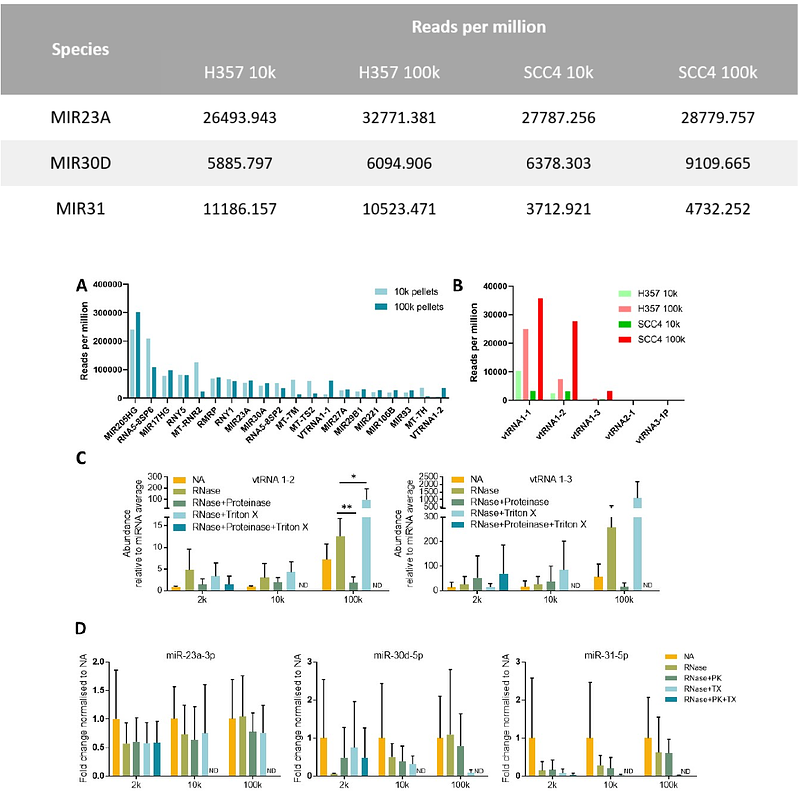Vault particles are common contaminants of extracellular vesicle preparations

Vault particles are common contaminants of extracellular vesicle preparations
Liu, X.; Nizamudeen, Z.; Hill, C. J.; Parmenter, C.; Arkill, K. P.; Lambert, D. W.; Hunt, S.
AbstractExtracellular vesicles (EVs) may contain a variety of molecular cargo including proteins and nucleic acids. Vault particle components have been repeatedly reported in the literature as EV cargo. Here, we demonstrated by small RNA sequencing that vault RNA (vtRNA) were highly abundant in EV pellets enriched by differential centrifugation. EVs were prepared by commonly used enrichment methods and biochemical assays used to determine whether vault particle components were bona fide EV cargo. EVs were isolated by differential centrifugation, size exclusion chromatography (SEC) and Dynabead immunocapture. RNase and proteinase treatment of EV preparations demonstrated that most vtRNA and major vault protein (MVP) were not enclosed and protected within the EV membrane. Vault-like particles were visualised in differential centrifugation pellets by cryo-transmission electron microscopy. EVs enriched by size exclusion chromatography and those isolated by immunocapture post-ultracentrifugation showed co-purification of MVP, whereas EVs isolated by direct immunocapture from conditioned medium were MVP-negative. Taken together, commonly used isolation techniques, such as differential centrifugation and SEC, can lead to contamination of EVs with vault particles. The current study highlights the importance of determining the topology of putative EV-associated components to determine if they are EV cargo or contaminants that have been co-purified.